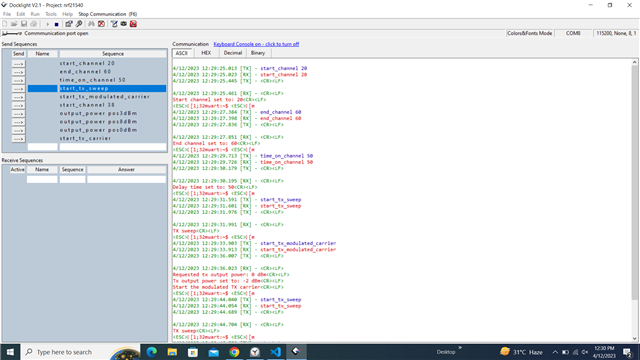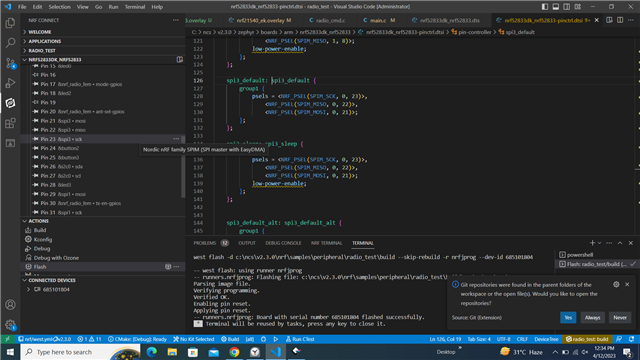Hi All!
I am using nrf21540DK, NCS version 2.3.0, Radio Test example, RSSI Viewer as a Scanner, and VSCODE studio as an IDE.
I am getting -23dbm when set to nrf52840 at -4 to 4dbm and -46dbm when setting nrf52840 at -20dbm. The distance between Scanner (nrf52833 connected to RSSI Viewer) and nrf21540 is 1 Meter almost.
I want to confirm that nrf21540 is working properly and reading out the internal registers like CONFREG0-3. Can you please help me with that
1)how to read them via SPI any code example?
2)As we are configuring the nrf21540 in Radio test example via UART commands (like output_power pos8dBm,start_channel 20 , and start_tx_sweep, etc) .So we are basically configuring these registers . Can you help me to find out where we can read those registers (CONFREG0-3) in the Radio test example?
3)I am also testing the custom board (nrf21540 + nrf52833).I configured pins according to our design but got -67dbm. This means nrf21540 is not working properly So to ensure that nrf21540 registers are properly configured, I need the above-mentioned point # 1-2 suggestions/solutions if possible.
Thanks & Regards,
Muhammad Usman


